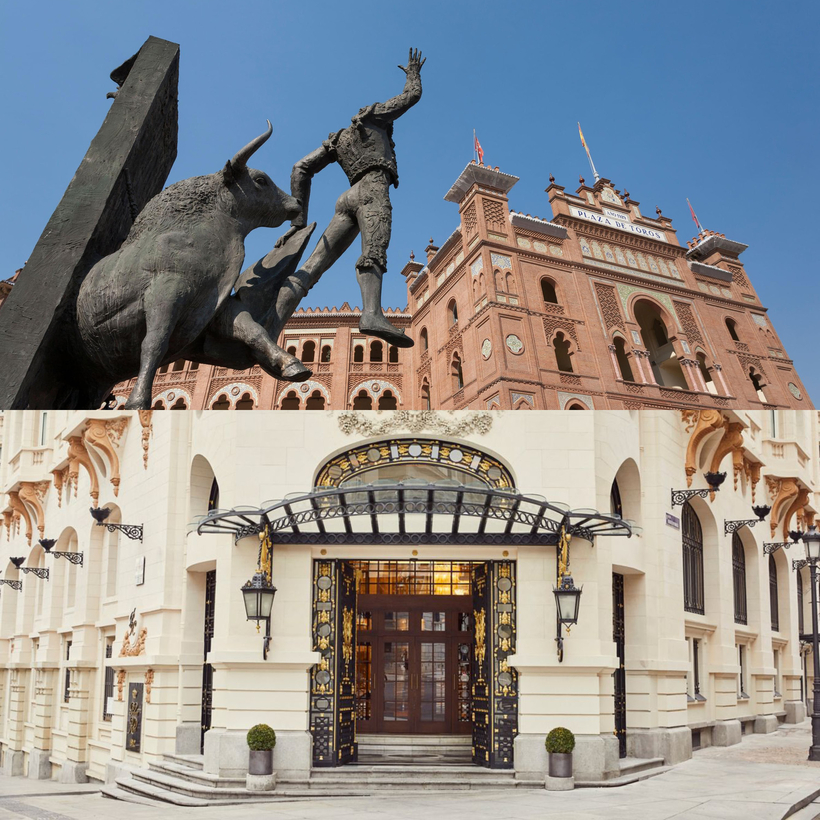The breach of etiquette at the bullfight spoke volumes about the effect of an influx of billionaires from overseas on Old Madrid.
Breaking the hush of Las Ventas bullring by standing up to leave in the final moments of a corrida, Juan Antonio Pérez Simón, one of Mexico’s richest men, then passed the Infanta Elena, the king’s sister. The royal shook her head vehemently in disapproval. Her companion and Pérez Simón’s partner exchanged remarks.
“An absolute disgrace,” spluttered an aristocrat seated nearby.
The episode highlights the transformation of the Spanish capital into a luxury destination for super-wealthy residents and visitors. It also laid bare some of the tensions accompanying Madrid’s rapid metamorphosis from old world faded grandeur to new world mega-rich bling.

The capital is experiencing an historic boom, attracting unprecedented numbers of billionaires, chiefly from Latin America but also the United States and increasingly Russia and Asia. The city’s fleet of five star hotels is growing, entire 19th-century residential blocks are being converted into luxury flats, business schools are packed with rich foreign students and gourmet restaurants are proliferating.
The wealthy central Salamanca district is now almost entirely colonized by Latin Americans. “The best restaurants are all fully booked—if you want to get a reservation it’s best to put on a Mexican accent,” said a Spanish businesswoman. “They’ll give you a table because Mexicans, like the Americans, leave huge tips.”
The city’s new status was sealed when Jeff Bezos, the billionaire founder of Amazon, celebrated his bachelor party in Madrid, enjoying what El Pais described as “the new hub of luxury and high-end nightlife experiences in the capital”. The American’s coterie refreshed themselves in fashionable venues around Salamanca, such as the restaurant Ten con Ten and Gunilla nightclub, where a bottle of champagne costs up to $14,600.

“The scene is now like London or Paris in terms of high-fliers,” said a Latin American banker, a Madrid resident who moves among the super-rich Latin American diaspora. “It has happened so fast.” He cited as an example the rising value of his own house in the exclusive Madrid suburb of La Moraleja. “I bought it in 2018 for €2.1 million euros [$2.45 million] and an Argentinian billionaire recently offered to buy it for €11.5 million [$13.4 million]. Instead he paid €16.5 million [$19.2 million] for another property here.”
Humphrey White, Knight Frank’s managing director in Spain, said: “It’s happened overnight. Those with €30 million [$35 million] or more are now geographically agnostic, no longer tied to their roots, and are ever younger in profile.
“They choose Madrid for its weather, cultural offer, its safety, excellent airport and world class business schools for the kids. Unthinkable only a few years ago, it’s now a global contender.”
Also Spain has various golden visa schemes and the Madrid region grants a 100 percent tax relief on the central government’s wealth levy which allows—through investments—a 20 percent deduction from personal income tax. The measure has been called the “Mbappé Law” after the footballer whose signing with Real Madrid coincided with it being passed.
White pointed to the spread of the “downtown luxury footprint” beyond Salamanca to areas such as Chueca where his company is selling more than thirty flats for up to $8 million in a restored elegant 1920 building.

The major Spanish banks have this year opened special facilities in Madrid for ultra high-net-worth individuals. Santander and CaixaBank offer services for families with assets of $58 million or more. BBVA has opened an office in the Salamanca district exclusively for those who have a minimum of $584,000 and are Latin American.
Not all are enamored with the influx. “I find Madrid changed for the worse,” said Fernando de Pardo, a historian and descendant of Christopher Columbus. “The barrios [neighborhoods] are losing personality, traditional shops and bars disappearing. Strange people have arrived with too much money but very little education and manners.”
Others point out the effect of the stampede on Madrid’s house prices. In May the average price per square metre in the capital had increased 24.3 percent year on year, according to Idealista, a property sales website. “A Spanish friend said she blames us for the crisis,” said the banker.
But many Madrileños are embracing the jetset boom. At Coque, a grand family-run restaurant with two Michelin stars, Mario Sandoval, the chef and co-owner, said: “London and Paris had their turn in the past and now it is all about Madrid. Olé !”

The restaurant is a luxury flagship of the “new Madrid”, boasting a “Macallan Salon”, where a shot of whisky can set punters back $1700. More than 70 percent of its diners are foreign and half of those are Latin American.
“Extraordinary things are happening now that are difficult to believe,” said Sandoval. “Recently, for example, we had a table of four whose bill came to over €30,000 [$35,000].”
He joked that the capital should now be called “distrito federal”, as Mexico City once was, as it draws “the world’s most influential people”. “They come because of the outstanding museums, Madrid’s simpatico welcome, the football and soon Formula One racing,” he said. “Yet Madrid will never lose its soul. My food is a tribute to our history, with new dishes from the time of Felipe II and Don Quixote.”
The preservation of Madrid’s soul was at the fore of the $116 million renovation of the city’s landmark Palace hotel, which reopened in January, said Pablo Flores, its general manager. “We used the oldest photographs we could find so that we could be faithful to its original splendor,” he said. “In the case of the lobby we used one from the civil war [1936-1939] which showed two soldiers guarding the front when it was used as a military hospital. Now we have doormen.”

The restoration, which recovered marble floors and the facade’s original cream sheen, has allowed the hotel to re-establish itself as a luxury offering alongside the new Four Seasons and spruced up Ritz hotels. Its new suites, with Italian furnishings and views over Neptune’s Fountain, cost $2900 per night.
Frank Powell, the headmaster and co-owner of the prestigious family-run Runnymede College, the first private British school in Spain, is among those who do not miss the classic Madrid. His school is welcoming a rapidly increasing number of pupils who are the children of American tech billionaires, who mainly live in the Salamanca district.
“Their parents are low-key, wear T-shirts and trainers and are not ostentatious,” he said. “I have lived all my life in Madrid. I know there are Madrileños who deplore it but the change is magnificent. It is now cosmopolitan and English-speaking. You can eat Chinese and Indian food, not just cochinillo [suckling pig].
“It’s buzzing. In my youth I remember everyone in Salamanca was right-wing churchgoers who read ABC newspaper and dressed in Austrian coats.”
Isambard Wilkinson is the Spain correspondent for The Times of London

